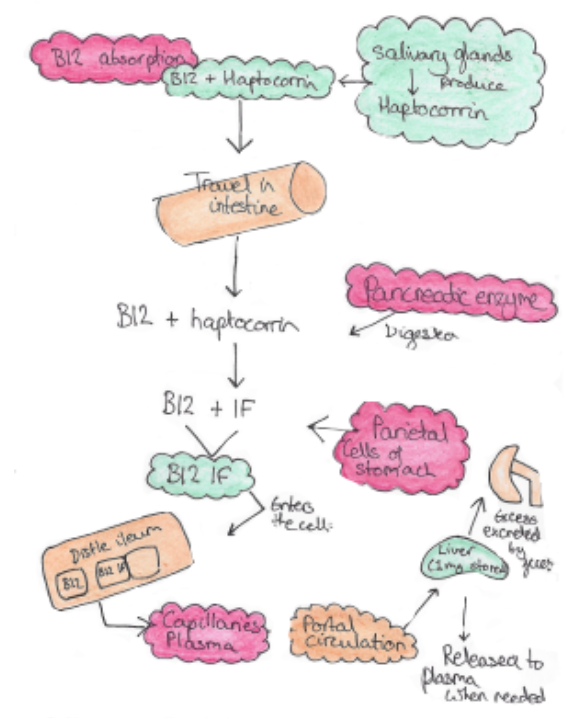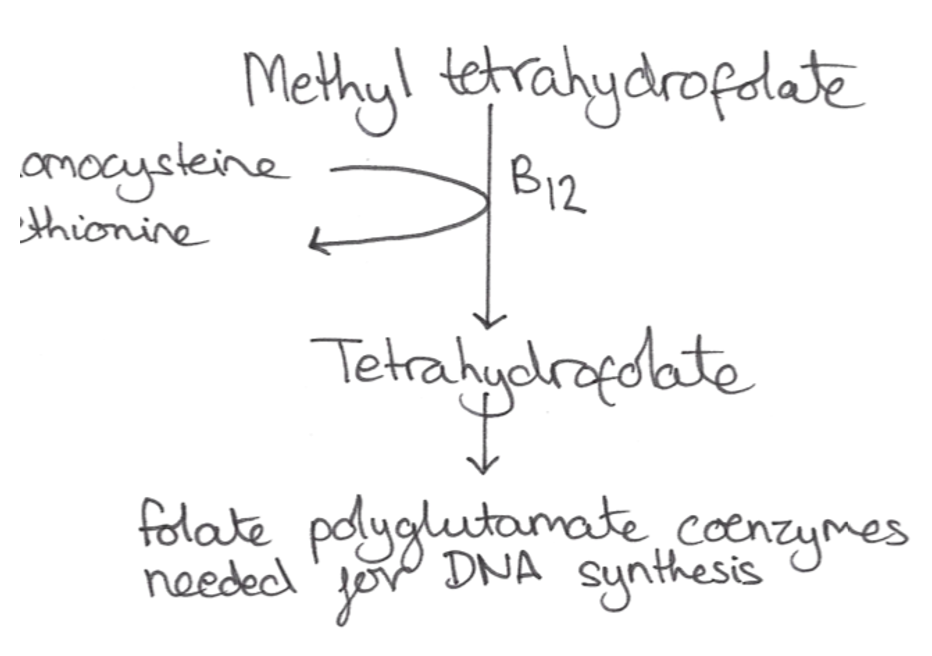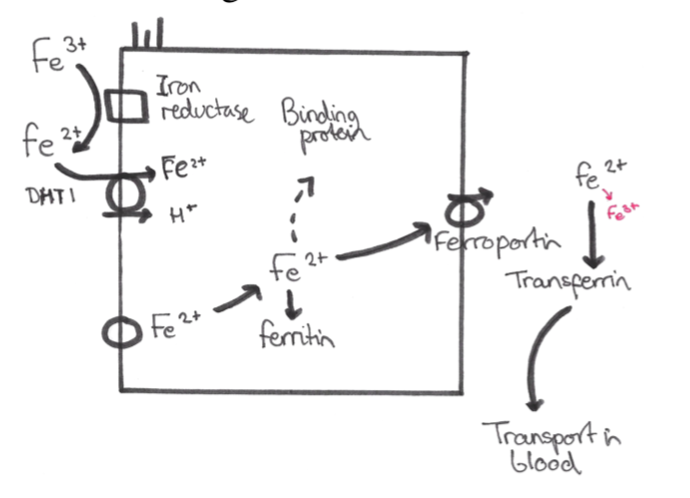Haematology Principles
Blood cells are made from heamatopoietic stem cells in bone marrow which differentiate into either:
– Common myeloid progenitors
– Lymphoid progenitors, which give rise to lymphocytes.
One of the most important types of cells is the red blood cell.
– Formed from an erythroid progenitor called reticulocyte.
– Its role is to carry oxygen to tissues around the body

In order to make red blood cells, you have to make the cellular precursors and haemoglobin:
Cellular precursors:
To make reticulocytes, folic acid is needed for thymidine synthesis to make DNA
– This needs Vitamin B12, which acts as a cofactor to transform folic acid to tetrahydrofolate, its active form.
– B12 has a 3-5-year store in the liver, whereas folic acid has a much smaller store in the body, so you need a regular supply.
– Humans acquire all Vitamin B12 from animal sources –> hence vegans take B12 supplements.
– Vitamin B12 is absorbed in the terminal ileum
– This requires intrinsic factor (IF) which is released from the stomach.
– It forms a complex allowing it to bind to the IF receptor in the terminal ileum
– Once in the blood, Vitamin B12 travels bound to the carrier protein transcobalamin


Haemoglobin:
This is the functional molecule of RBCs, which is composed of 4 polypeptide chains – 2 alpha, 2 beta
– Each chain carries a prosthetic haem group which is responsible for binding oxygen
– A haem group consists of an iron (Fe2+) ion (charged atom) held in porphyrin rings, which are bound by their nitrogen atoms to the central Fe2+ ion
– In adults, the most common hemoglobin type is a tetramer (which contains four subunit proteins) called haemoglobin A, consisting of two α and two β subunits non-covalently bound, each made of 141 and 146 amino acid residues respectively
Therefore, in order to make haemoglobin, the body needs to absorb iron from animal and vegetable foods.
– The regulation of iron content in the body is done by controlling its
absorption from the small intestine.
– Fe2+ ions are absorbed on the brush border of the small intestine.
– Iron is transported across to blood using the protein Ferroportin.

– In the blood it is carried bound to protein Transferrin.
– Iron can also be stored in pools within cells as Ferritin.
– This is converted to Hemosiderin if levels are substantially high.
– When iron levels increase in the body, Hepcidin is released by the liver which prevents iron absorption.
– Instead it is converted to ferritin in luminal cells and shed in the faeces.
Plasma Ions
The plasma carries many inorganic ions, which are important for maintaining electrolyte balance.
– Each has a reference range, which can lead to a specific set of symptoms if disturbed.
Ion | [Extracellular] mM | [Intracellular] mM |
Na+ | 145 | 10 |
K+ | 4 | 140 |
Ca2+ | 1 | 0.0001 |
Cl- | 110 | 10 |
Mg2+ | 2 | 0.5 |

